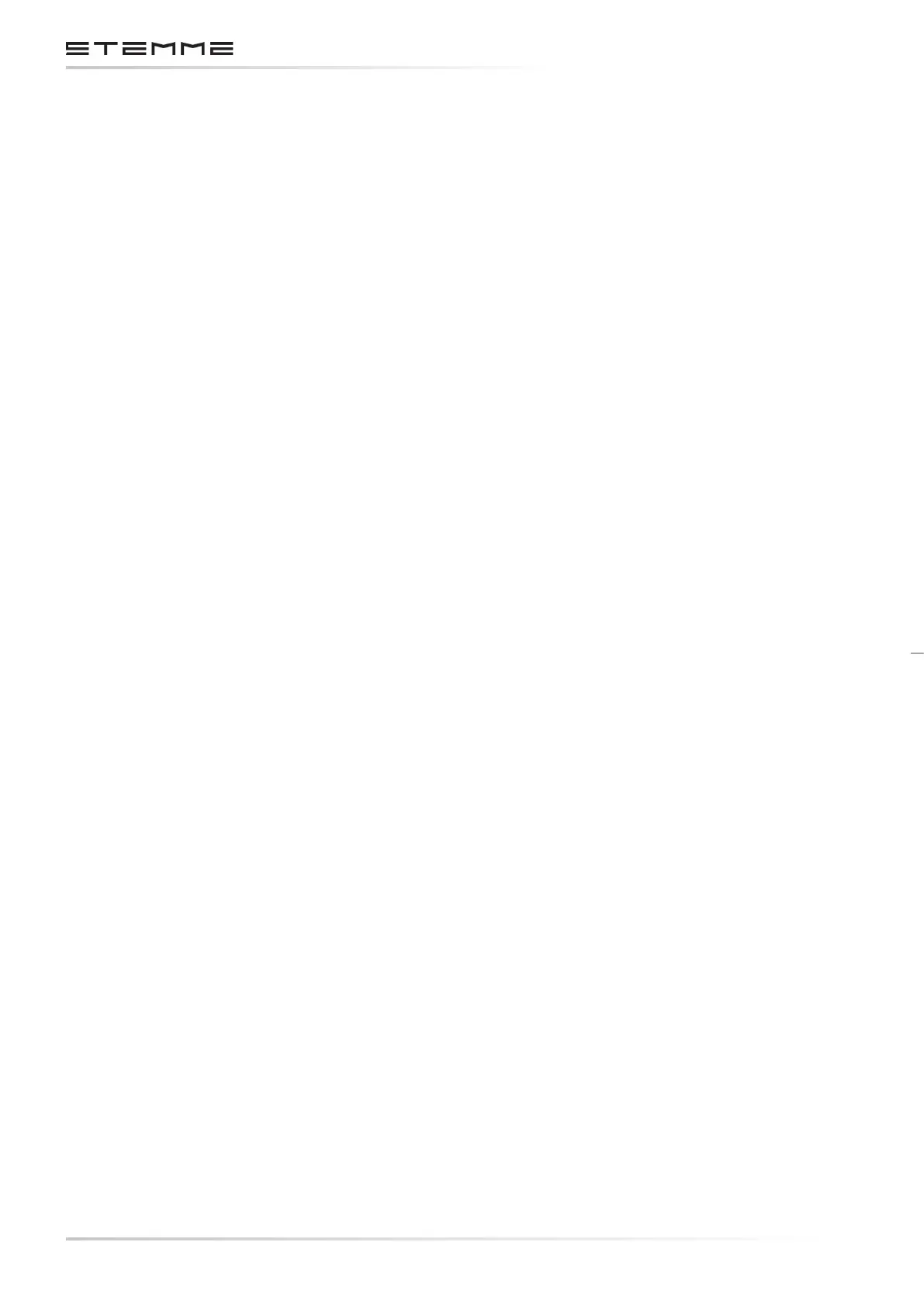DOCUMENT NUMBER:
L500-912.820 ISSUE JUL 20, 2016
AMENDMENT: 00
DATE:
CHAPTERPAGE 320
MAINTENANCE MANUAL STEMME S12
The air inlet of the RH cowling distributes the air for cylinder ram air cooling, for the intercooler
and for the oil radiator.
When installing the RH cowling, the opening for the cylinder cooling is pressed against a rubber
sealing on the coupling sheet of the upper support of the cylinder cooling air hose, routed to the
distribution plenum for the cylinders. The induction air duct is prepared with a cut-out for the
induction air lter. The lter assy. on the turbocharger inlet, consisting of lter, sealing plate and
air hose, remain installed while cowling is removed.
The complete lower cowling forms the outlet cowl ap. It is fastened by its forward hinges and
positioned by a rear control cable assy., which counteracts two springs acting towards the open
position of the ap.
3.4.10 PROPELLER
The foldable propeller consists of a center hub and two propeller blades hinged to this central unit.
The folding axis allows the propeller blades to move in the plane of propeller rotation. When the
propeller is not rotating, the blades fold in by spring forces. The central part of the propeller is made
of high strength aluminum. The propeller blades consist of carbon, Kevlar and glass composite.
During engine starting, the blades unfold automatically by centrifugal force. Rubber stops protect
the blades in case of a possible over-swing. The fully folded position of the propeller blades also
has rubber stops. The propeller blades may be retracted at any possible pitch angle.
After engine shut-down in ight, the propeller must be stopped by the propeller brake to allow the
blades to fold in. The brake is operated by the propeller brake handle on the instrument panel. In
the folded position the propeller can be positioned with the propeller positioning handle on the
instrument panel to allow the nose-cone, which forms the fuselage nose, to retract to the closed
position. After closing the nose-cone with the nose-cone handle in the center part of the instru-
ment panel, the propeller is completely enclosed within the contours of the fuselage to achieve
optimum soaring performance.
The propeller blade pitch can be changed from take-o (ne pitch) to cruise (coarse pitch) po-
sition. The pitch control is electrically actuated and operated by a switch on the center console
behind the throttle assy. The take-o position of the propeller blades (not merely the switch) is
indicated by the green light next to the switch.
